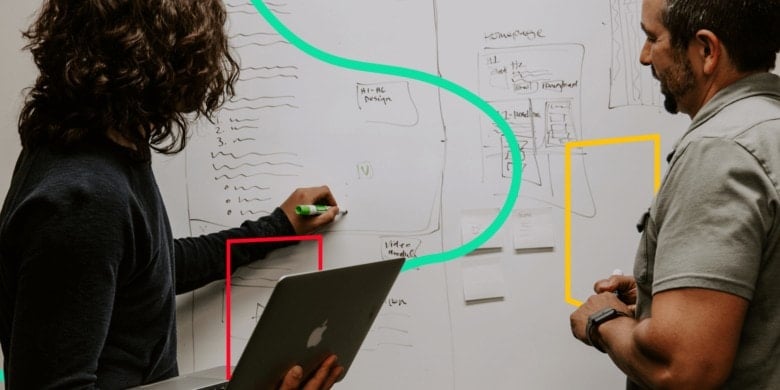Project risk management is a lot like weighing the pros and cons of a major life decision. You want to achieve the best possible outcome, but you also want to identify and plan for any risk that may impact your life moving forward. When it comes to project risk management, you can apply this same thought process to identify all the risks that could potentially impact a project.
Mistakes aren’t avoidable. But by planning for risk and creating a risk management plan upfront, project managers will have a better grasp of what to expect when hurdles arise and how to distribute resources effectively. This, in turn, will increase the chances of project success.
Boost your team’s efficiency with Hubstaff's productivity tools
Importance of project risk management
Identifying risks and putting a project risk management plan in place can benefit you in several ways. By incorporating risk identification and risk response planning into project management, you’ll see a number of benefits.
Better planning
Taking the time to walk through your project, the project objectives, and any potential project management risk will lead to better outcomes.
You can start by creating a list of internal and external risk factors. From there, you can perform a quantitative risk analysis and see how these risks will affect budgets and timelines.
Increased communication
Risk management leads to better overall communication.
By assessing project risks, your project team will know what’s expected of them. When your team is on the same page, it becomes much easier to help project stakeholders understand the process.
Plus, everyone will understand where money is being allocated. They’ll have time to provide input before the risk management plan is complete and the project begins.
Deadlines maintained
While a project plan includes milestones and a target completion date, unforeseen factors can throw timelines off.
Risk management creates realistic project due dates. If you identify risks from the start, you’ll discover and eliminate problems before your projects get rolling.
More proactive
Projects often spiral out of control because a team member tries to fix an issue in the middle of a project.
This reactive approach is done in a rush to avoid adding time and money. While this may seem necessary at the time, these last-minute changes can lead to incomplete or subpar projects.
Being proactive and using good project risk management means that problems can be addressed systematically with enough time to make changes. That way, response plans are ready when necessary.
Supports future projects
If risk management was done properly and helped your project stay on task, then you can use this newly acquired knowledge for your next project.
However, if your risk management response could have been improved, you can identify issues and make tweaks to your process before the next project begins. Preparing to fail can seem like a defeatist attitude at times, but risk analysis is often the difference between successful and unsuccessful projects.
Steps in the risk management process
Now that you’ve seen some of the benefits of risk management, how do you apply this process for better project management?
Here are some steps you can take to mitigate risk and avoid obstacles that could throw your project off track.
1. Risk assessment
Begin by talking to your project team and key stakeholders. Discuss any concerns they have about problems and project risks that could lead to negative outcomes. Note that every project type will have its own specific risks.
Running project scenarios can help you identify potential risks. Write down any and all concerns and note every potential risk event that comes to mind. You can record this information in your risk register.
Keep the conversation casual so that communication can flow seamlessly. This way, the team will feel more comfortable sharing their honest thoughts on potential risk events.
Not only will this allow you to identify project risks, but it will help to build a stronger team dynamic. This, in turn, will make the process of managing risk a lot smoother.
It’s also important for the project risk management process to uncover all categories of potential risks. This includes:
- Technology
- Materials
- Budget
- People
- Quality
- Suppliers
- Legislation
2. Identify positive vs. negative project risks
Many project managers tend to think of risks as negative, but there are actually two types of risk in project management. When looking to identify risks, you should look for both positive and negative ones.
You’ll need to identify positive risks in your risk management process and include them in your risk management plan. For example, what if you have more customer demand than anticipated? How will you respond? There are several potential and unforeseen successes to plan for.
3. Risk analysis
After performing the risk identification process, put it to paper by creating a project risk register. Dig into each risk event and analyze its impact.
Can your project survive these risk factors? You’ll also need to take project risk tolerance into account.
This can either be done in an Excel sheet or better yet, use an Agile project management software that can outline the process.
You can include the following fields in your risk register:
- Risk event with a brief risk description and date
- Probability on a scale of 1-5 of it occurring
- Scale 1-5 how risk impacts end date
- Scale 1-5 how risk impacts budget
- Scale 1-5 how risk impacts quality
- Scale 1-5 how risk impacts benefits
- Suggested action to take should a risk occur
- Current status of risk
4. Rank risks
Once you have numbered every project management risk in your risk register, focus on risks with the highest ratings across all categories.
If you have three or four new risks with several fours or fives, you know these are likely to occur. Ask yourself:
- How will you address these to ensure successful project completion?
- Is there a root cause for these risks?
- Why are they even issues from the start?
By figuring out what the main issue is with each of these risks, they won’t snowball out of control.
5. Estimate costs
Next, determine what kind of resources you need to address each of these new risks. Most project managers swear by the contingency fund.
A contingency fund is a portion of your project budget (usually about 10% of the total budget) that you can set aside in emergencies.
You’ll want to account for a contingency fund in your project plan’s budget. Otherwise, your projected budget won’t hold much weight and your project schedule might need to be adjusted.
It’s best to give a range of cost estimates based on how the risk plays out. These costs can be added in as a contingency straight to your project plan if they’re likely to occur.
Another cost you’ll need to estimate is payroll. Make sure you account for the cost of assigning team members to your project.
6. Assign team members
After estimating costs, you’ll have a pretty clear idea of who you can afford to assign to the project.
You may have assigned team members to various action items within your plan, but you also need a point person for every risk. These point people are known as risk owners.
Make sure each risk owner is well equipped for handling the potential risk and monitoring it throughout the course of the project. Appropriate actions should be outlined and assigned in your risk plan and included in your risk register for reference.
If you’re concerned about who to assign and how much they could cost you, consider a time tracking tool like Hubstaff.
When you use it in conjunction with Hubstaff Tasks, you can have teams track time to each specific Task within your project. Hubstaff will show you their earnings in real-time. This allows you to make changes to the project team and avoid missing budgets and deadlines.
Have your risk owners keep track of their team’s hours throughout the project. If they start to see bandwidth issues, they can bring it to your attention.
7. Risk monitoring throughout the project
Once the project gets going, it’s important to check-in with these point people throughout the project life cycle to determine risk status as well.
Communication is key. It’s the only way to manage risks before they get too big to handle.
Risks are not to be forgotten when you assign them to risk owners. Ultimately, mitigating these risks is your responsibility as project manager. You should track risks throughout the entire project — not wait until they begin to take shape.
8. Summarize risks and plan ahead
Once the project is complete, discuss the risk response plan and risk mitigation strategies you used with the team and any other key stakeholders.
Talk about what went well and exactly what could have been improved. Then, create a report that you can use for future projects. All lessons learned from past projects should be applied going forward to improve your risk management process.
Utilizing a project risk protocol
When building your risk management plan, using tools and templates will help you track and manage the risk management process better.
You can use a simple tool like Excel to monitor risk events, but the right project management software is even more effective.
If you’re already using an Agile framework, turning to a digital workflow can help you manage risk more effectively and ensure project success.
Not only can you manage risk at every project phase, but using visual boards and columns for each step of your process will help you get a clear picture of the project.
It will also give team members a familiarity of the project as a whole. They’ll have a place where they can shift seamlessly between their own responsibilities and the overall project goals. This will help them understand the weight of their decisions, the importance of meeting deadlines, and what adjustments can and can’t be made.
Effective risk management software allows you to assign, move, and monitor risks associated with complex projects. You can also use it to create Gantt charts that help you understand what specific risks might mean for a project. Unlike a static Excel document, this system is dynamic and also visual. This keeps everyone on task and in control.
What’s your risk response plan?
Risk management is vital to keeping a project flowing and addressing uncertainty.
Many projects fail due to lack of risk planning. By looking at all risks and potential problems before and during a project life cycle, you help the team collaborate in a constructive and transparent way.
It will also propel a project forward by minimizing risks and sticking to project objectives. This will help you pinpoint, assign and assess risk for more successful project outcomes.
This post was originally published March 2020 and updated August 2021.
Subscribe to the Hubstaff blog for more posts like this
Most popular
The Critical Role of Employee Monitoring and Workplace Security
Why do we need employee monitoring and workplace security? Companies had to adapt fast when the world shifted to remote work...
15 Ways to Use AI in the Workforce
Whether through AI-powered project management, strategic planning, or simply automating simple admin work, we’ve seen a dramatic...
The AI Productivity Panel: Lessons From Leaders on What’s Working (and What’s Not)
When I moderated this AI productivity panel, I expected a solid conversation. What I didn’t expect was the flood of real-world i...
Employee Performance Dashboards: Templates, Tools, and Best Practices
Keeping track of how your team’s really doing can be tricky. Spreadsheets pile up, one-on-ones only tell part of the story, and...






